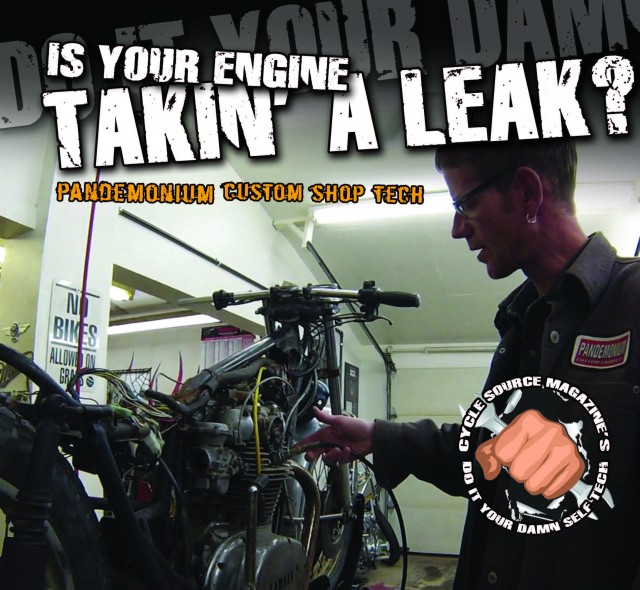
Pandemonium Custom Shop Tech
Article by: Daniel Donley of Pandemonium Custom Choppers- pandemoniumc2.com
Originally Published In The February 2015 Issue Of Cycle Source Magazine
I’m writing this month’s article after coming across a barn find bike… and as many of you know these could be gems or they could be hunks of junk. So before you just get knee deep in tearing the engine apart this is something that you can do to try to diagnose any issues without the tear down. This tool is also used on an engine that is running but you think there might be a problem but not sure where. So on to the barn find…. Making an engine leak tester to evaluate the condition of an engine. You can buy this tool but why would you want to do something like that when you probably have everything you need in the shop already to make one.
The parts you need to make a leak tester -air coupler, old spark plug, air regulator. See I told ya…you already got this stuff.
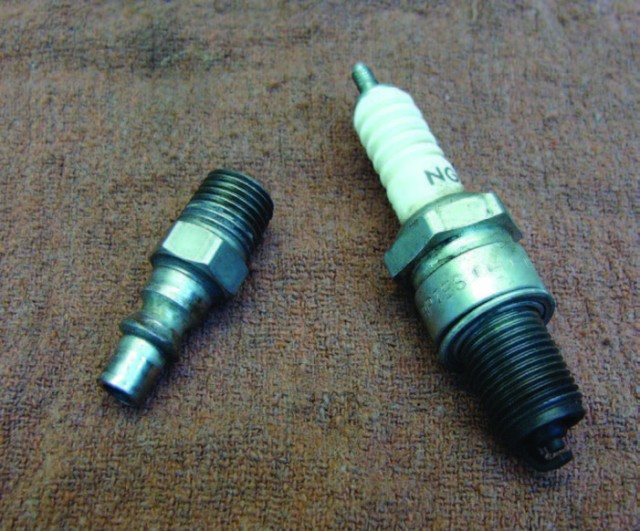
Old spark plug and air coupler.

Now get your hammer out and wrap the spark plug up in a shop rag and smash the porcelain out of it. You will have to use a small punch to get all the small porcelain pieces out of the plug body.

Porcelain removed from the spark plug body and air coupler.

Clean the pieces up with a wire brush and some acetone. Then use the shop welder to weld the air coupler to the spark plug body. Now you have the main piece for your leak tester.
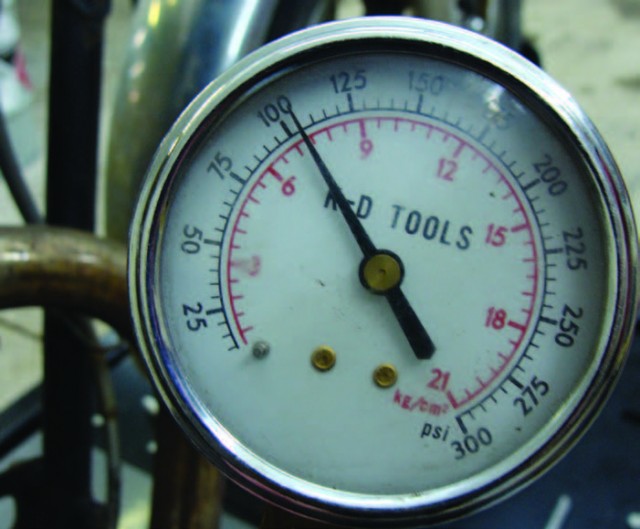

Just for the hell of it I ran a quick compression test, and yep it’s low. This engine will run but not well. See a compression test will tell you that the engine is worn but it don’t tell you were. This is were doing a leak down test on an engine will tell you actually what is worn. Bore, rings, intake valve seats, or exhaust valve seats .This test will let you know what you’re going to be getting into on your engine rebuild, or what you don’t need to.
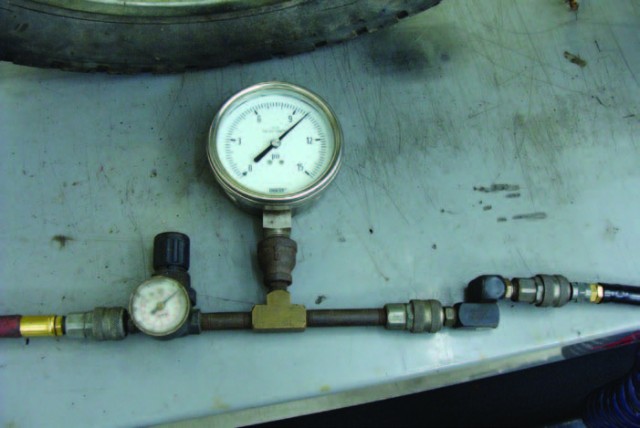
Regulated air pressure to about 10lbs
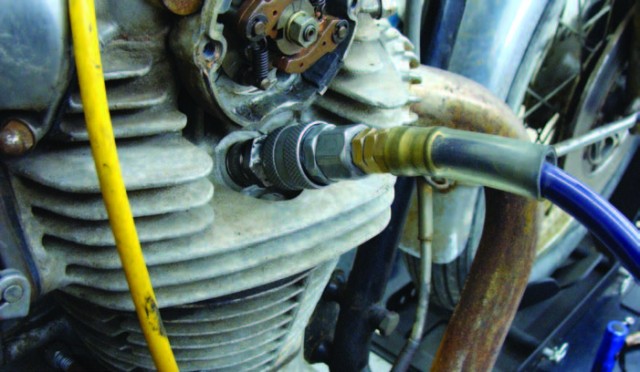
To begin the leak test bring your piston to top dead center (TDC) on compression stroke. With both intake and exhaust valves closed. Now screw in your spark plug air coupler into that cylinder, and plug in the 10 psi airline.
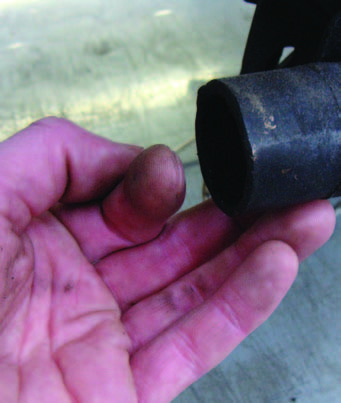

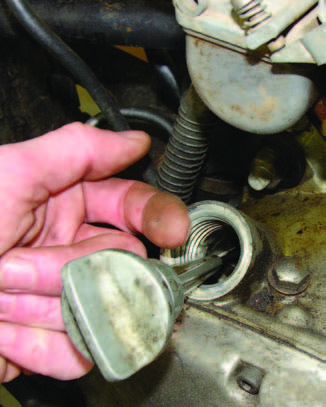
Now what we’ve got here is an air leaking engine. You just have to figure out were. So using your wet finger check for air leaks. An air leak at the carb would be a leaking intake valve. The exhaust, an exhaust valve. Oil dip stick or crankcase vent that would be your rings and bore. Now with this simple tool you can evaluate your engine and know where it has issues that need repair, and be able to put a cost to them. Without even having to tear the engine down. If you have any questions about this month’s tech feel free to give me a call at the shop. 419-576-6812
This post is sponsored by:
























